Where best to smell the roses? These Botanical Gardens are a good place to start.
Gardening is an art form, from the precise Zen-like designs of the East to the cascading lawns with fountains and shimmering pools so prevalent across Europe. These outdoor spaces delight at every turn and have long been sought out as a retreat from the world, one that brings you closer to nature with walking trails, verdant forests and brilliant displays of colour. Whether trying to beat the summer heat or escape the winter cold inside towering tropical greenhouses, botanical gardens remain a popular year-round destination.
Ranging from Singapore’s Garden by the Bay to Keukenhof in the Netherlands, London’s Kew Garden and Morocco’s blue-lit Jardin Majorelle, these are my Top Botanical Gardens where you should be witnessing wonder in bloom.
1. Kew Gardens, London, England
A botanical garden in southwest London that houses the largest and most diverse botanical collections in the world, Kew Gardens was founded in 1840 from the exotic garden at Kew Park. Its living collections include some 27,000 plant species, while the herbarium has over 8.5 million preserved plant and fungal specimens. Kew Gardens is loved for its 19th-century Palm House and other Victorian glasshouses and conservatories, while Kew Palace is the former summer residence of King George III. Visit the exotic rainforest, the Princess of Wales Conservatory which demonstrates ten of the world’s climatic zones, and the Waterlily House with its giant lily pads. Venture onto the Treetop Walkway which offers a bird’s-eye view of the gardens. The arboretum covers two-thirds of the area at Kew and you’ll find everything from eucalyptus trees to giant redwoods and ancient Japanese pagoda trees. More than just a scenic greenspace, Kew Garden is an internationally renowned research institution, employing hundreds of scientists and researchers.


2. Gardens by the Bay, The Central Region, Singapore
Singapore’s Gardens by the Bay is a hugely futuristic, national garden known for its towering Supertree structures that enable visitors to skywalk over the giant seashell-shaped greenhouses. A green jewel and masterpiece of horticulture and garden artistry, it entertainingly presents the plant kingdom while introducing you to diverse biomes and habitats. The park spans 101 hectares in the Central Region of Singapore adjacent to the Marina Reservoir and consists of three waterfront gardens; the Bay South Garden, Bay East Garden and Bay Central Garden all linked by a promenade that offers stunning views towards the city. The Bay South is home to the conservatories and much-photographed iconic Supertrees. Within the Flower Dome find ever-changing floral displays, including the popular Tulipmania, Orchid Extravaganza and Blossom Beats. Gardens by the Bay is part of the nation’s successful plan to transform its ‘Garden City’ into a ‘City in a Garden’ and is Singapore’s premier outdoor recreation space and a national icon.

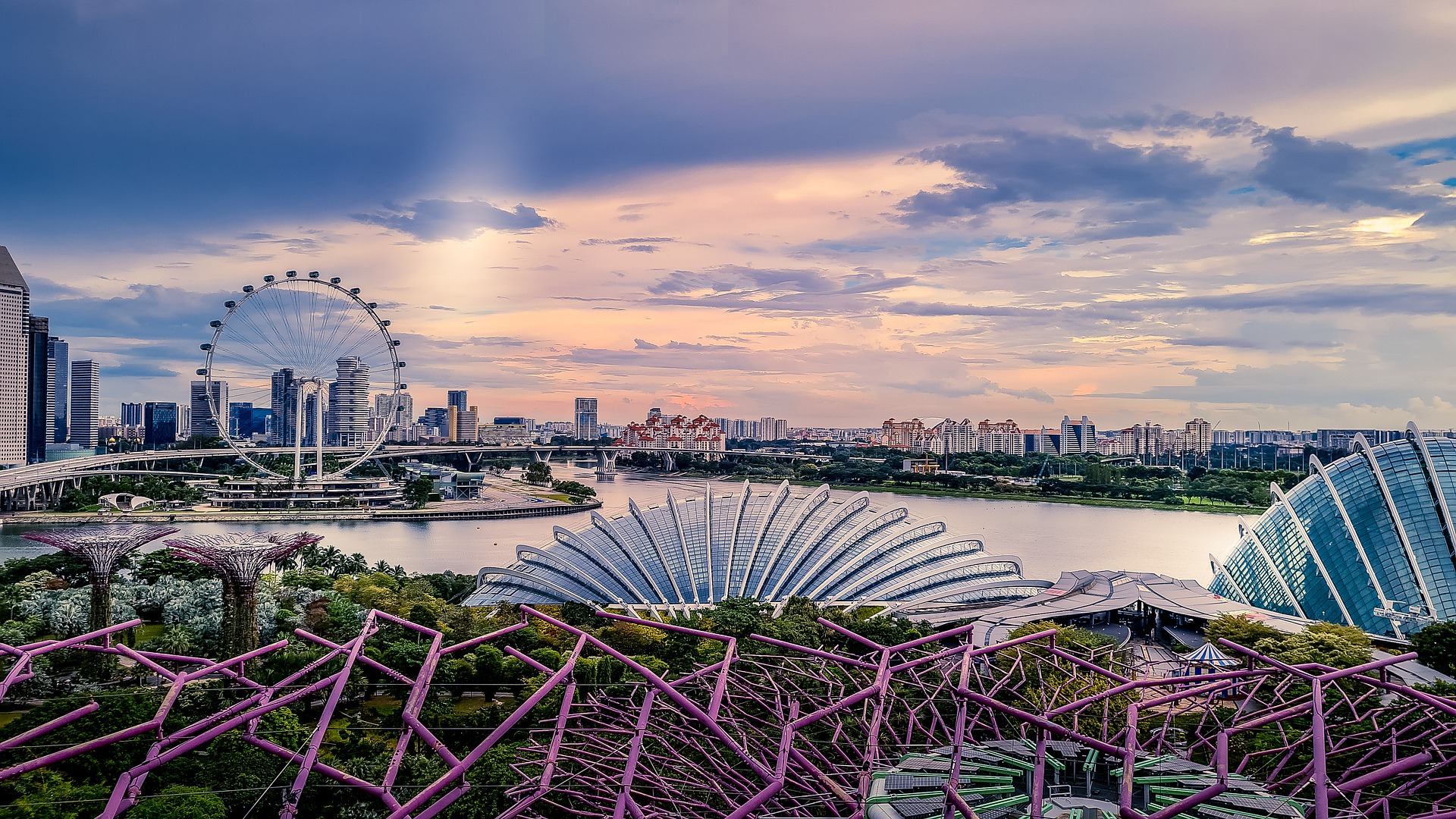
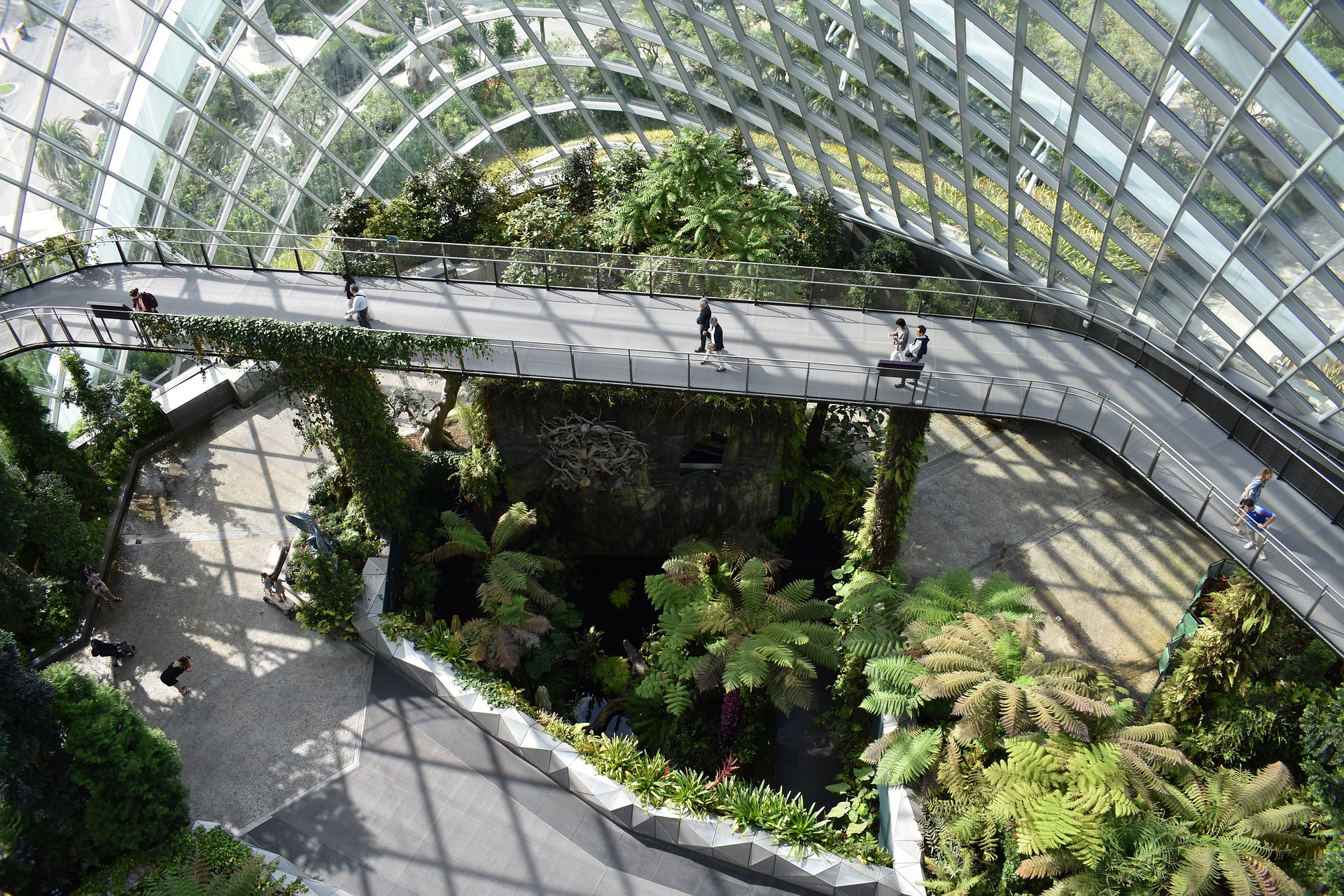
3. Jardin Majorelle, Marrakech, Morocco
Under the Moroccan sun, the Jardin Majorelle in Marrakech is a cool respite from the intense pace and heat of the medina and Djemaa el-Fna. Lovingly created by French artist Jacques Majorelle over almost forty years from 1923, the grounds were inspired by his travels and funded by his paintings. Initially able to build a small studio and house from his earnings, as his career grew he added a Cubist villa designed by the French architect, Paul Sinoir. The garden took on a life of its own, featuring innumerable exotic species, cacti and palm trees from around the world, with reflective pools and fountains added. The now-iconic Majorelle blue was lavishly applied throughout. The garden gradually fell into disrepair and was bought and restored by fashion designer Yves Saint-Laurent and his partner Pierre Berge in the 1980s. They moved into the villa and set about transforming other buildings into what is now the legendary Berber Museum and a boutique store, adding to the plant varieties and perfecting the remarkable attraction.
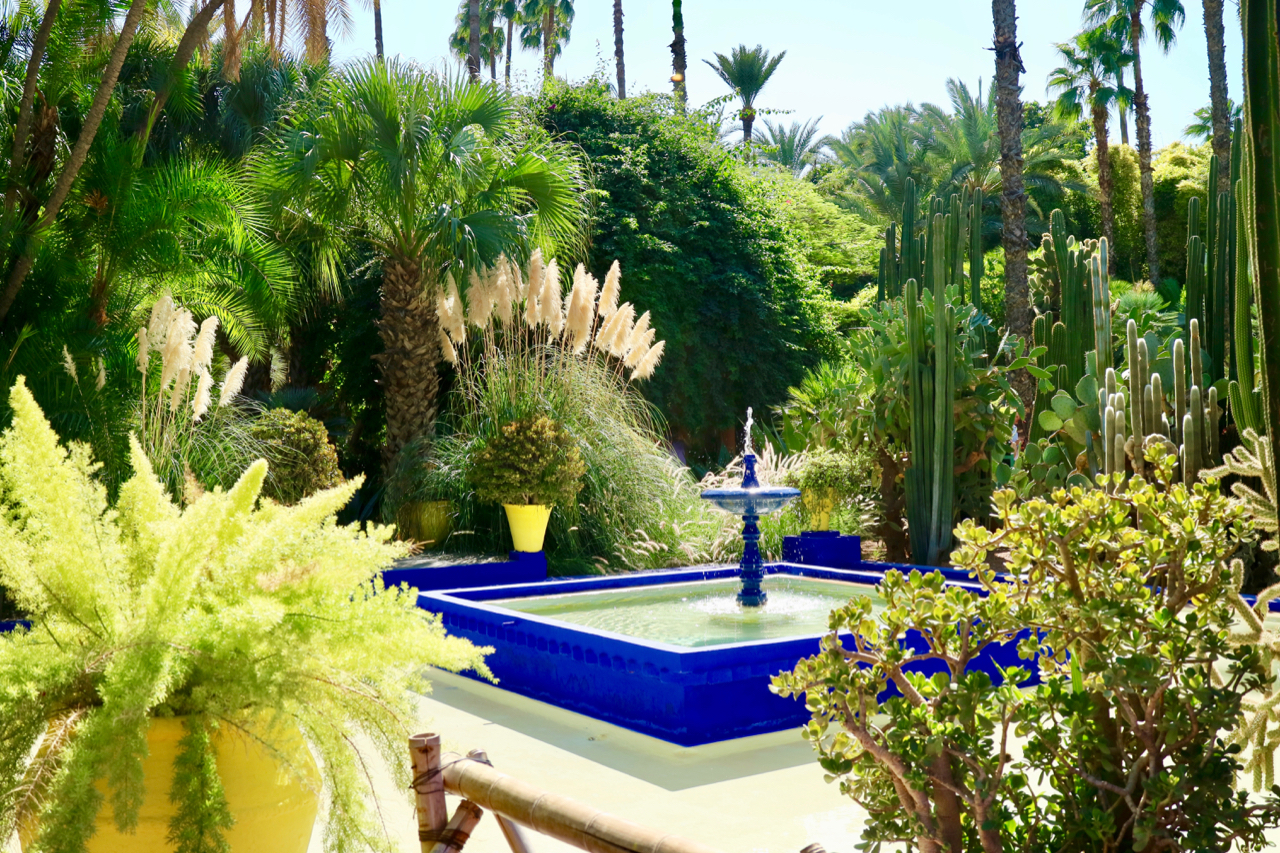
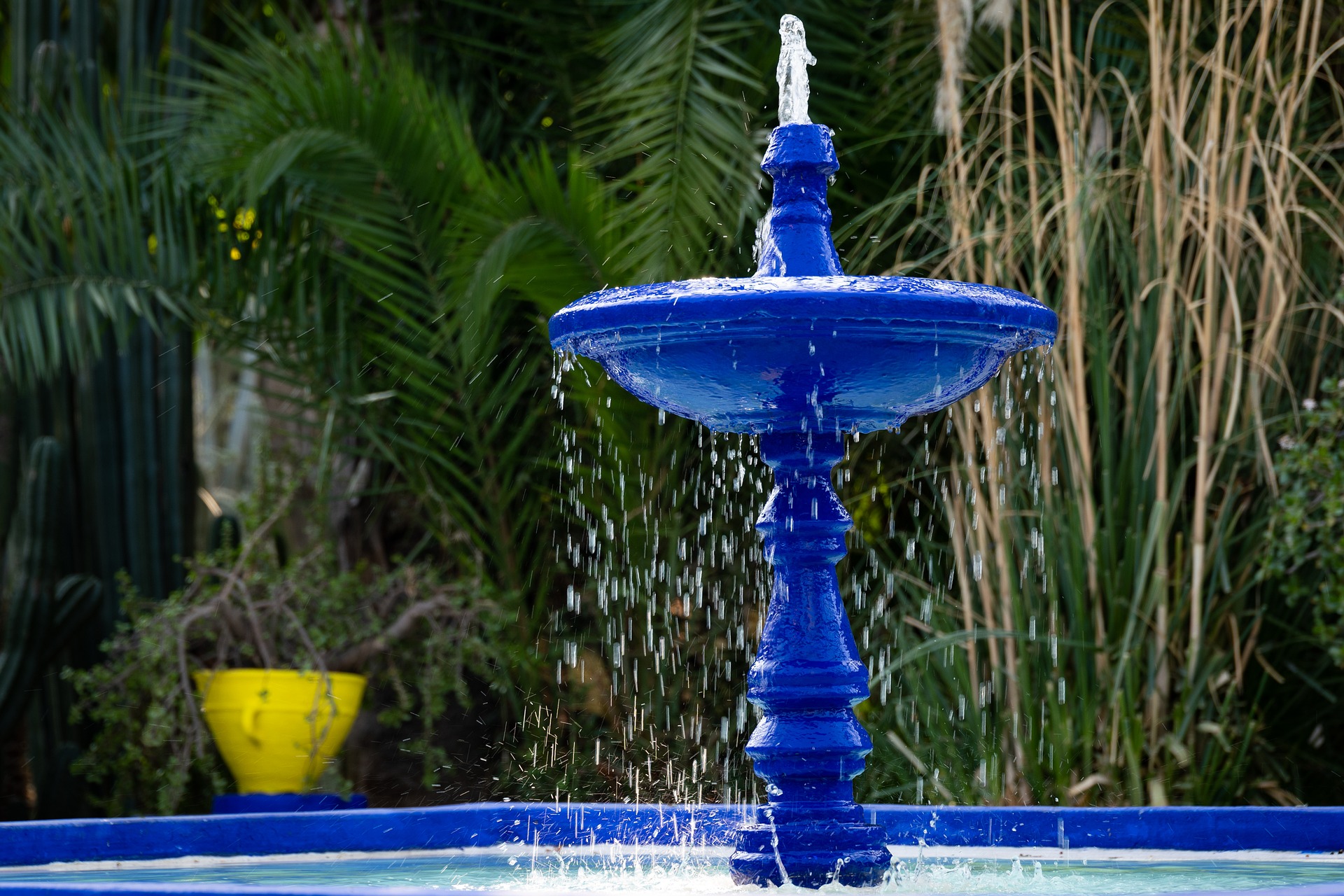
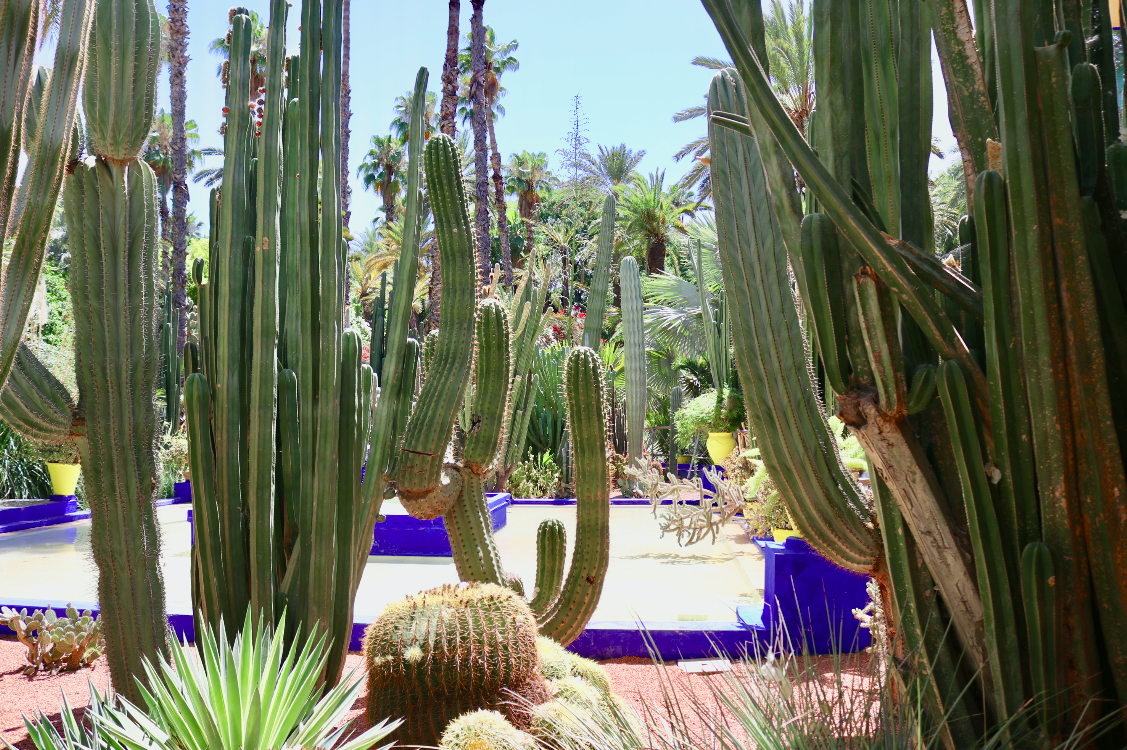
4. Jardim Botanico, Rio de Janeiro, Brazil
Marmosets, toucans, imperial palms and Amazonian water lilies populate the 137ha of this tropical paradise in the affluent Jardim Botânico neighbourhood, named for Rio’s Botanical Gardens. From the elegantly landscaped Parque Lage nearby are wooded trails that lead up Corcovado Mountain to the Christ the Redeemer statue and the tropical forest of Tijuca National Park. Created in 1808 by D. João VI of Portugal, the garden is famous for the exuberance and the scientific importance of its plant collection, as well as for the beauty of its dramatic landscape. Visit the Orchids, Bromeliads, Fern and Insectivorous Plants greenhouses and the themed collections such as the Japanese Garden, created in 1935 from the donation of 65 species of typical Japanese plants. Among the monuments is the XVI-century building which houses the Visitor’s Centre, the statues of Eco and Narciso by Mestre Valentim, and the Academy of Fine Arts Portal. The general area is renowned for chic bars and sophisticated dining spots.

5. Kirstenbosch National Botanical Gardens, Cape Town, South Africa
Situated on the slopes of Table Mountain, the 528ha Kirstenbosch National Botanical Garden lives up to its reputation as the most beautiful garden in Africa, enhanced by the sheer grandeur of the setting against the eastern slopes of Table Mountain. Displaying a wide variety of Cape Flora, also known as fynbos, including sugarbushes, pincushions and heaths. Plants from all the diverse regions and biomes of southern Africa are grown at Kirstenbosch, including a near-complete collection of cycads. The Botanical Society Conservatory is a custom-built glasshouse for growing and displaying plants from arid regions that cannot survive outdoors. The gardens include a fragrance garden, a medicinal garden, 2,500 species of plants found on the Cape Peninsula, a Protea garden and a braille trail. If you have little ones, take them to see the life-sized sculptures of dinosaurs and a pterosaur that are dotted between the cycads. Kirstenbosch features a sculpture garden, where you’ll find an ever-changing exhibition of African stone sculptures and bronze animal sculptures by Dylan Lewis. Walk the Centenary Tree Canopy Walkway – affectionately known as the Boomslang. The 130-metre steel-and-timber bridge snakes through and over the trees of the Arboretum, providing stunning views towards False Bay.
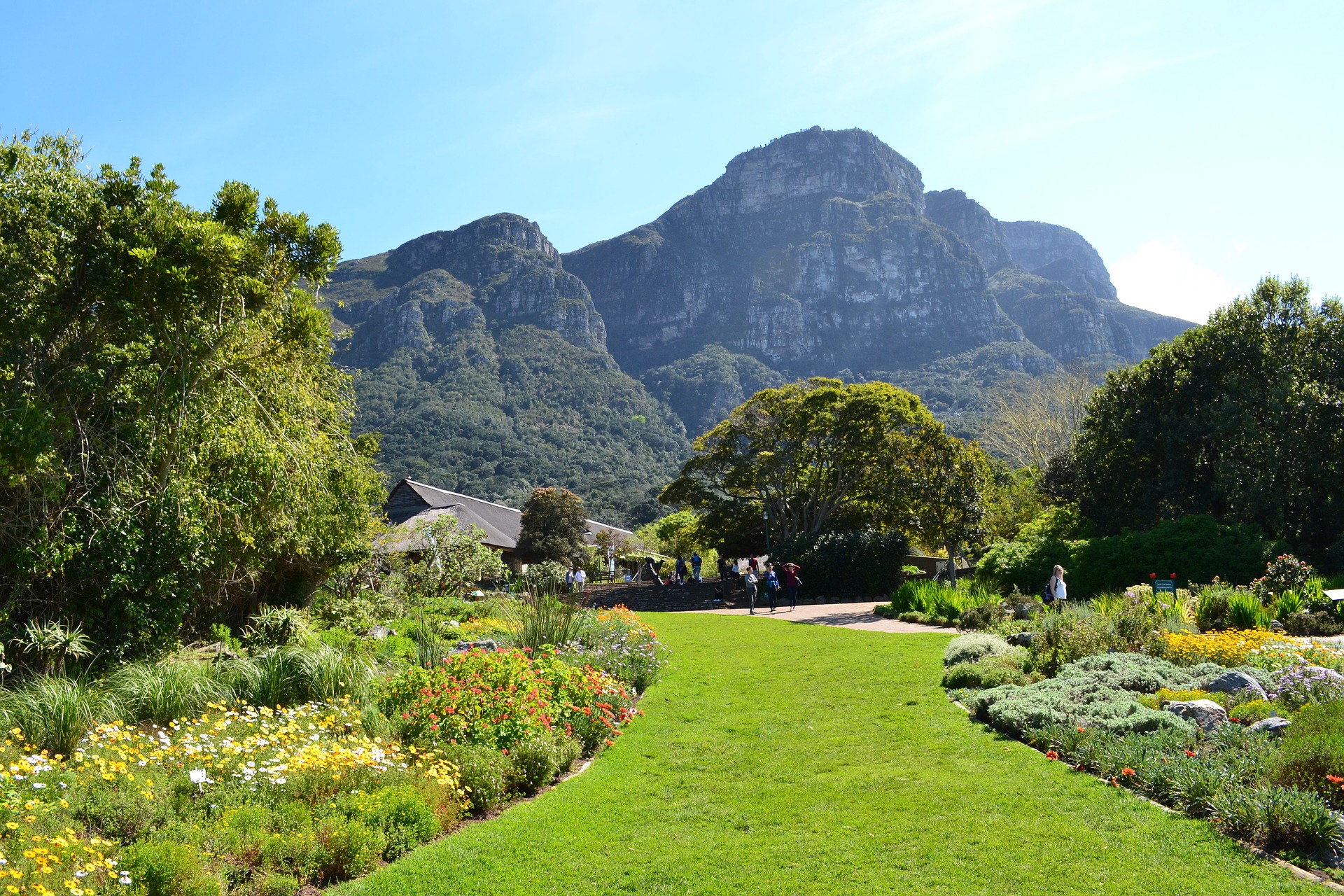
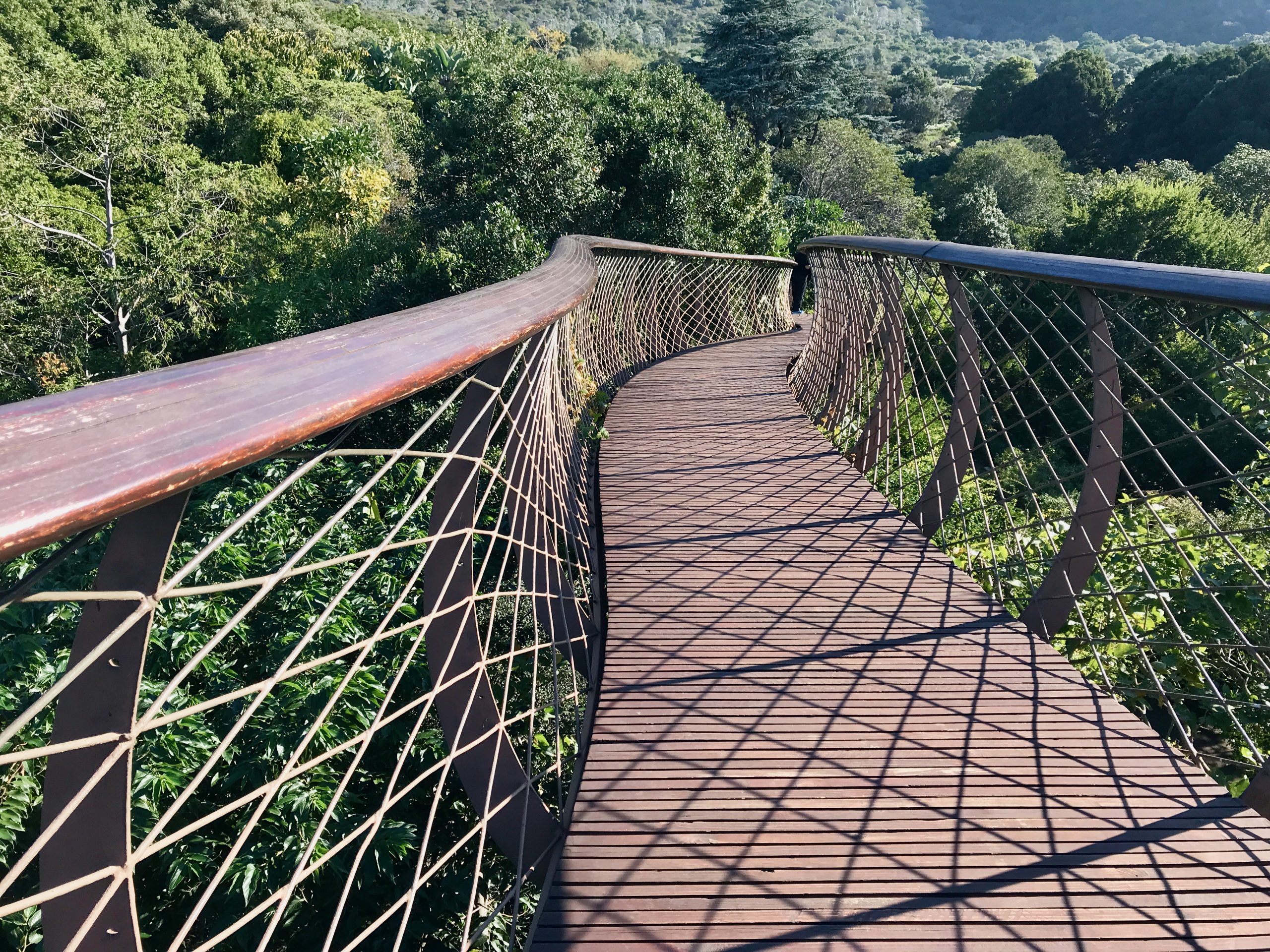

6. Eden Project, Cornwall England
This remarkable 15 ha project in Cornwall has been transformed from a barren china clay quarry into an oasis of greenery. Set up by an ecological charity to promote education about the natural world, its two huge biomes bring the rainforest and the Mediterranean to south-west England. The tropical biomes house the world’s largest rainforest in captivity with exotic plant life, architecture and art making this sustainable haven a naturalist’s dream. Beyond them, over 3000 plant species grow here, from ancient trees to thriving vegetable gardens. Sculptures are dotted around, often with an environmental message. There’s a giant bee that shows how important their pollination is to the food chain and an even bigger WEEE Man, a 7m tall figure made from electrical appliances to show how much e-waste one person produces in their lifetime. In the Mediterranean biome, different sections recreate the plants and landscapes found in the warm temperate regions around the Mediterranean, South Africa and California. Grapevines, olive groves, lemon trees, cacti and date palms, as well as a springtime tulip garden.

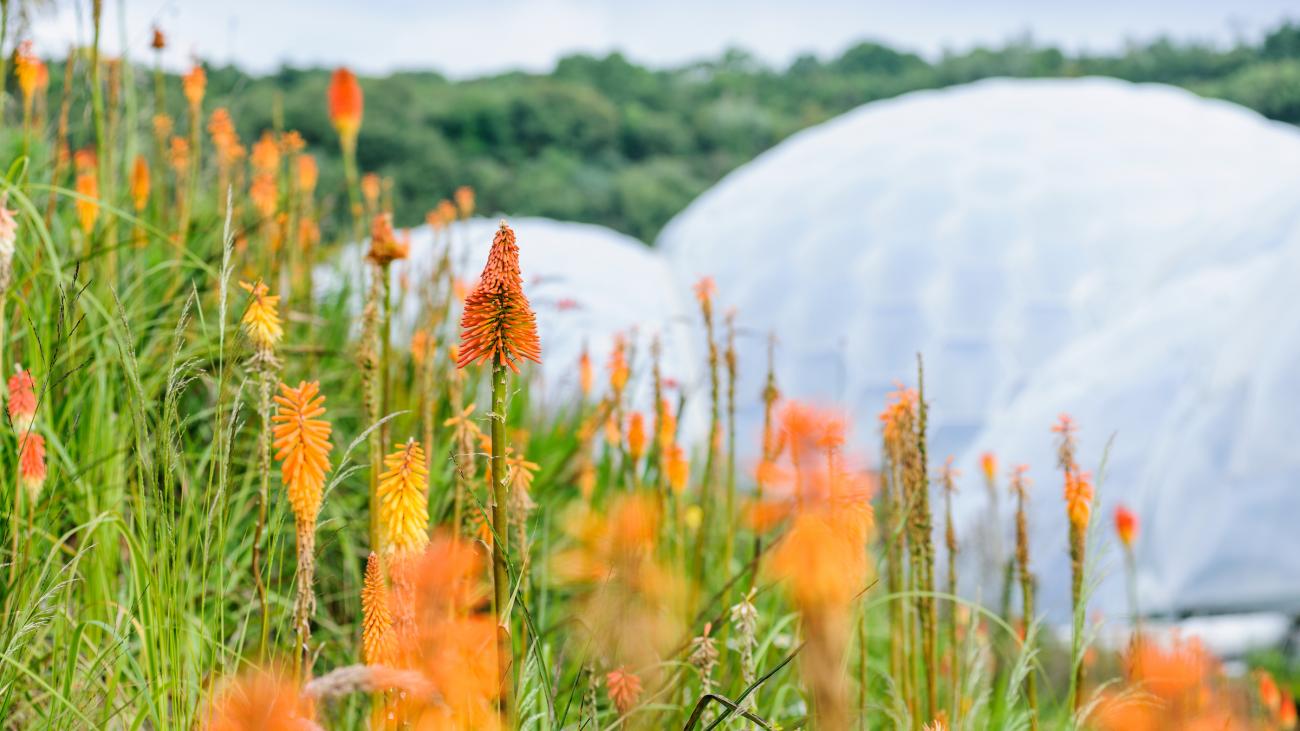
7. Keukenhof, Lisse, Netherlands
Also known as the Garden of Europe, Keukenhof is one of the largest flower gardens in the world. Situated in the municipality of Lisse in the Netherlands, it covers an area of 32 hectares where as many as 7 million flower bulbs are planted by hand each autumn, to flower in the spring. Keukenhof is widely known for its tulips with a variety of 800 listed. It also features numerous other flowers including hyacinths, daffodils, lilies, roses, carnations and irises. The 15km of hiking trails at Keukenhof afford spectacular views of the flowers with beautiful ponds and various pavilions with restaurants and terraces from which to enjoy the spectacle. In addition to the fantastical flower show is the largest statue garden in the Netherlands with works by renowned national and international artists. Keukenhof is open year-round for private events and festivals but is only open to the general public for the tulip display from mid-March to mid-May each year.

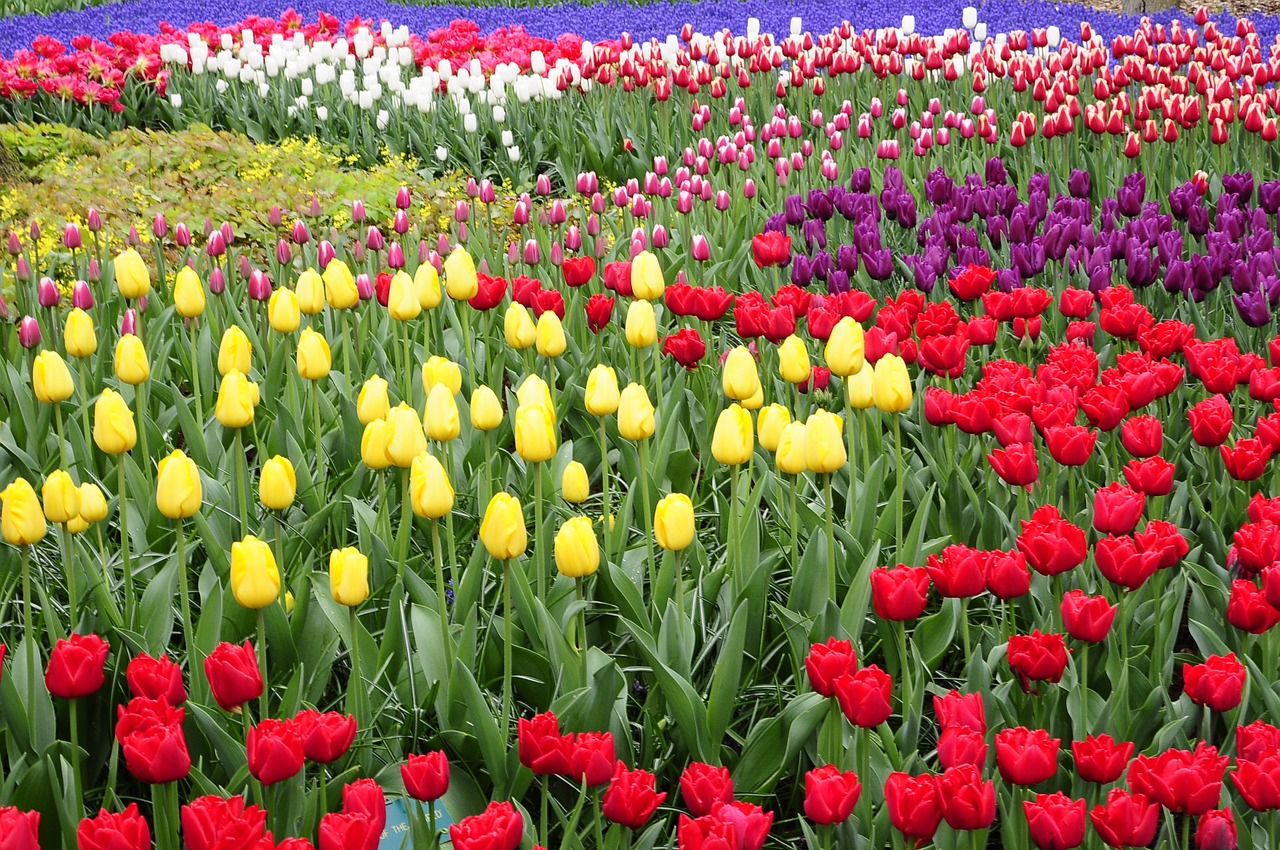
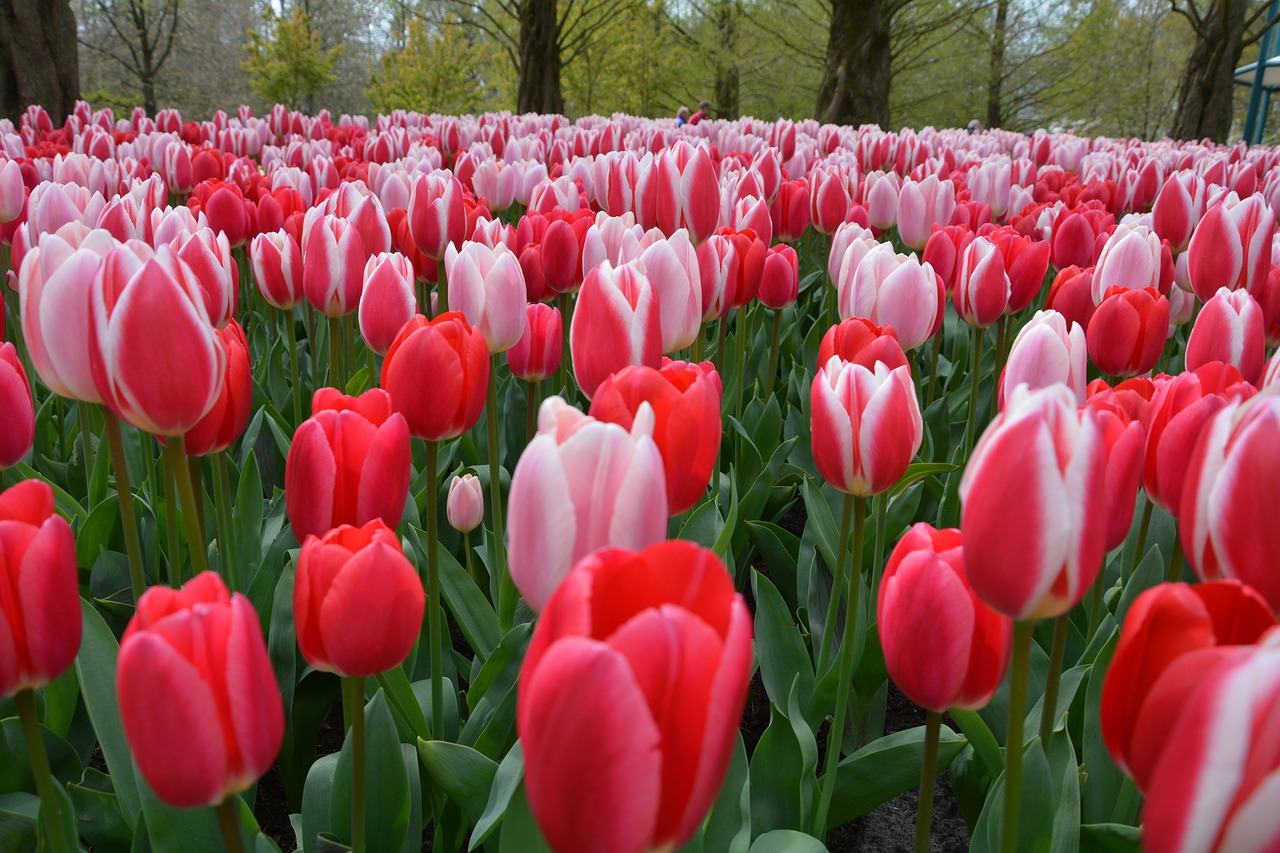
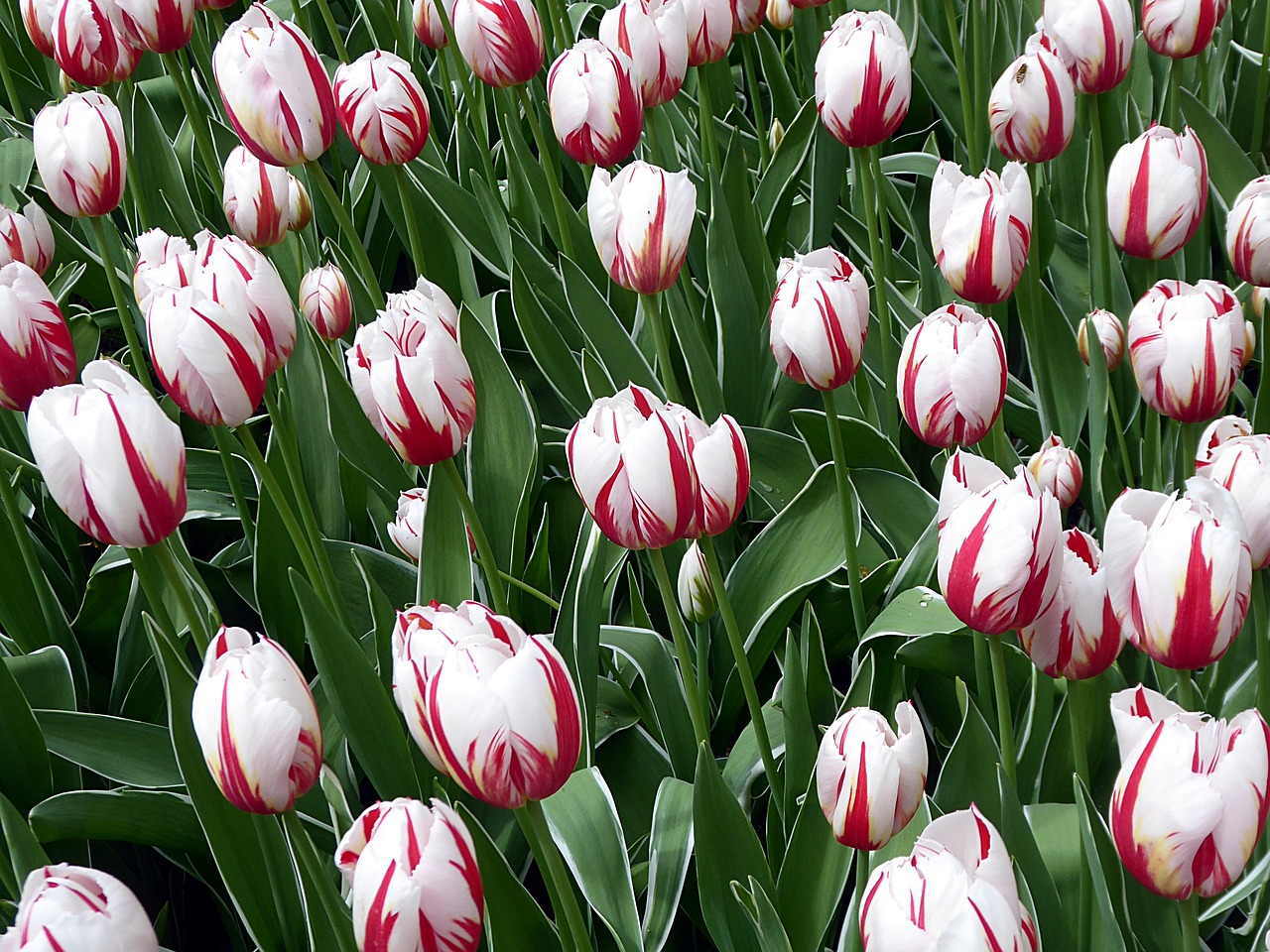
8. Villa d’Este, Tivoli, Italy
No other garden has such spectacular waterworks and theatrical effects as those of Ville d’Este in Tivoli. An architectural gem with magnificent landscapes, the complex is renowned as one of the most beautiful examples of Italian Renaissance gardens in Europe. Originally commissioned by Cardinal Ippolito II d’Este, a former governor of Tivoli and son of Lucrezia Borgia, with the work carried out by the architect Pirro Logorio. The complex extends for 4,5 ha and includes hedge-lined avenues and around a hundred fountains – each a true work of art in itself. The water gushing from the fountains comes directly from the River Aniene. Most noteworthy are the Rometta and imposing Fontana di Tivoli which rounds off the avenue of the hundred fountains. Also, the Fontana del Bicchierone, designed by Gian Lorenzo Bernini and Fontana degli Uccelli and the Fontana dell’Organo, produce music from the water running through them. Look out too for the Fountain of Neptune, one of the most photographed in the gardens.























Discussion about this post